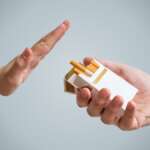Character builds community. Therefore, use this opportunity to spice up your neighborhood with different events or block parties. It may also help to build a public park. In fact, public parks are great ways to build a community for everyone. Read this guide to building a public park in your neighborhood to see how.
Location
The first step in this guide is location. Location matters greatly in proper public park design. There are three factors you must consider: accessibility, character, and safety. Accessibility relates to how residents will access it, whether or not it’s handicap accessible, and its inclusivity. Character and safety relate to the area around it. Does the park sit near a historic landmark? Perhaps the community has a rich history that helps strengthen the park’s purpose. Most importantly, the park must be within a safe, low-crime area.
Building Materials
The next question you should ask yourself is: what materials will construct the park? Traditionally, wood is the main resource. It’s economical, sturdy, durable, and versatile. However, wood poses serious safety risks. Children get splinters if left in an untreated park. Fortunately, newer materials, such as HDPE fencing, offer the same characteristics as traditional wood without the risk of splintering or cracking. This way, your public park is a safe, welcoming environment for everyone without risk of injury.
Equipment
Playground equipment is for all to enjoy, but don’t forget the primary visitors: children. Be sure to include park equipment designed for all age groups, from toddlers to teenagers. Play panels, bridges, climbers, crawl tubes, decks, ramps, slides, and transfer steps are great pieces for every park. While these may target mostly younger children, gazebos, benches, and picnic tables are great for teens and adults. The equipment is one of the most important facets of the park, so take caution on choosing the right pieces.
Landscaping
The final part of this guide to building a public park in your neighborhood is landscaping and architecture. Natural terrain helps enhance a park’s space. After all, you don’t want children to play in a parking lot. Parks should be green, beautiful, and enjoyable. Add flower banks, potted plants, and other landscaping accents to make your park stand out.










 Deering Estate
Deering Estate
 Massage Envy South Miami
Massage Envy South Miami
 Calla Blow Dry
Calla Blow Dry
 My Derma Clinic
My Derma Clinic
 Sushi Maki
Sushi Maki
 Sports Grill
Sports Grill
 The Healthy Kitchen
The Healthy Kitchen
 Golden Rule Seafood
Golden Rule Seafood
 Malanga Cuban Café
Malanga Cuban Café

 Kathleen Ballard
Kathleen Ballard
 Panter, Panter & Sampedro
Panter, Panter & Sampedro
 Vintage Liquors
Vintage Liquors
 The Dog from Ipanema
The Dog from Ipanema
 Rubinstein Family Chiropractic
Rubinstein Family Chiropractic
 Your Pet’s Best
Your Pet’s Best
 Indigo Republic
Indigo Republic




 ATR Luxury Homes
ATR Luxury Homes


 2112 Design Studio
2112 Design Studio
 Hamilton Fox & Company
Hamilton Fox & Company
 Creative Design Services
Creative Design Services
 Best Pest Professionals
Best Pest Professionals
 HD Tree Services
HD Tree Services
 Trinity Air Conditioning Company
Trinity Air Conditioning Company
 Cisca Construction & Development
Cisca Construction & Development
 Mosquito Joe
Mosquito Joe
 Cutler Bay Solar Solutions
Cutler Bay Solar Solutions


 Miami Royal Ballet & Dance
Miami Royal Ballet & Dance
 Christopher Columbus
Christopher Columbus
 Pineview Preschools
Pineview Preschools
 Westminster
Westminster
 Carrollton
Carrollton
 Lil’ Jungle
Lil’ Jungle
 Frost Science Museum
Frost Science Museum
 Palmer Trinity School
Palmer Trinity School
 South Florida Music
South Florida Music
 Pinecrest Orthodontics
Pinecrest Orthodontics
 Dr. Bob Pediatric Dentist
Dr. Bob Pediatric Dentist
 d.pediatrics
d.pediatrics
 South Miami Women’s Health
South Miami Women’s Health

 The Spot Barbershop
The Spot Barbershop
 My Derma Clinic
My Derma Clinic




 Miami Dance Project
Miami Dance Project

 Rubinstein Family Chiropractic
Rubinstein Family Chiropractic
 Indigo Republic
Indigo Republic

 Safes Universe
Safes Universe
 Vintage Liquors
Vintage Liquors
 Evenings Delight
Evenings Delight





 Atchana’s Homegrown Thai
Atchana’s Homegrown Thai
 Baptist Health South Florida
Baptist Health South Florida

 Laser Eye Center of Miami
Laser Eye Center of Miami
 Visiting Angels
Visiting Angels
 OpusCare of South Florida
OpusCare of South Florida

 Your Pet’s Best
Your Pet’s Best





 HD Tree Services
HD Tree Services
 Hamilton Fox & Company
Hamilton Fox & Company


 Creative Design Services
Creative Design Services